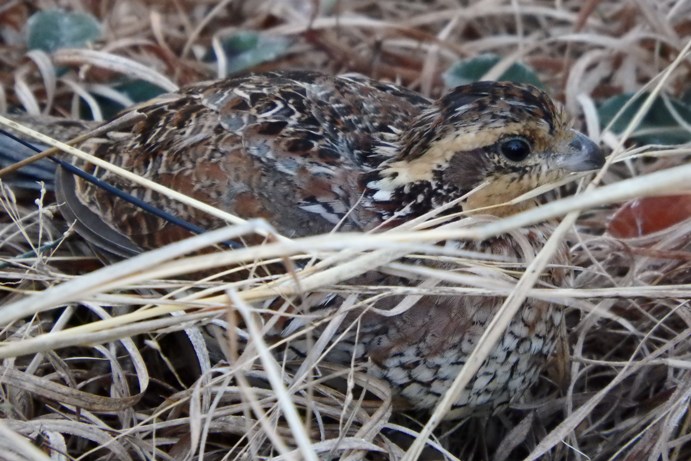
PINELANDS – June 29, 2017 – The problem was evident and alarming: Populations of Northern Bobwhite quail had dropped 82 percent, from 1966 to 2010 across its national range, and in New Jersey it was considered functionally extinct.
The loss of quality habitat, especially young forest, made it increasingly more difficult for the quail to nest. For the Northern Bobwhite to survive in southern New Jersey, New Jersey Audubon (NJA) and its partners joined in a progressive, three-year research project to bring in wild quail from Georgia, where there is a viable population.
NJA is reintroducing the quail to restored habitat in the Pinelands, where the quail had virtually disappeared over the past four decades.
“We have seen a substantial decline in quail and yet, with proper habitat management, we believe we can bring them back, which is why we are bringing them in to reestablish their population,” explained John Cecil, Vice President for Stewardship, NJA.
After a massive effort and coordination with state agencies and project collaborators, the first quail nest of 2017 was discovered by NJA’s researchers at the Pine Island Cranberry Study Site in Chatsworth, Burlington County. The nest, as well as three more discovered in June, marks the third consecutive year of successful breeding by the translocated birds; further evidence of a turning tide in New Jersey.
A key partner in the project is the Haines family, which owns the largest cranberry farm in the state and has been harvesting cranberries since 1890. The family, operating under a forest stewardship plan for its 17,000 acres since 2001, is working with NJA on the project, marveling in the fact that quail are returning to land the family has cultivated for generations.
“My grandfather always told my dad and my dad told us if you have a resource you need to take care of it,” said Stefanie Haines, a member of the fifth-generation of the Haines family who is working the land. “If the quail are back, we are doing what we are supposed to do.”
As part of the project, the quail are captured in the wild in groups in Georgia and carefully transported to New Jersey. Each bird is fitted with its own radio collar and carefully tracked with radio telemetry. This allows NJA to quickly learn if they are thriving in the new habitat hundreds of miles north of where they were hatched.
The first release was in April 2015, with the first quail nest discovered in New Jersey three months later – the first known nesting in the Pinelands since the 1980s. From the first release, researchers have discovered 66 eggs had hatched. There was a second release in April 2016, and a third release this spring. Researchers are eager to discover which quail are collared and which aren’t – signaling the return of naturally-born quail in New Jersey. Dozens of nests have been found on the study site since the project began.
Aside from Pine Island Cranberry Company, key partners in the project include the University of Delaware, Pine Creek Forestry, New Jersey Division of Fish and Wildlife and Tall Timbers Research Station and Land Conservancy in Tallahassee, FL, which focuses on the study and preservation of the Bobwhite quail. Long-term quail translocation research is a hallmark of Tall Timbers.
“We are working to create permanence with Northern Bobwhite in New Jersey,” said John Parke, Stewardship Project Director – North Region, NJA. “In reviewing the data collected over the last few years and seeing these wild birds adapt to their new surroundings is a testament to how important active management is to maintain forest health and wildlife diversity,” Parke said. “The Northern Bobwhite Restoration Initiative has implications for quail recovery in the Mid-Atlantic, is providing information on other species that use these same managed forest habitat, and is motivating others to implement forest management.
“We are excited by the progress of the project and eager to see quail back in New Jersey,” he added.

